How to get RedHat GUI Linux on Azure
This section describes how to launch and connect to RedHat GUI Linux in Azure.
Note : This offer is available on X86 and ARM64 Architecture. Select the solution as per your requirement and follow the below steps to provision and connect to it.
- Open RedHat GUI Linux VM listing on Azure Marketplace
Click her for ARM64 based RedHat GUI Linux

- Click on Get It Now
- Select a Resource group for your virtual machine
- Select a Region where you want to launch the VM(such as East US)
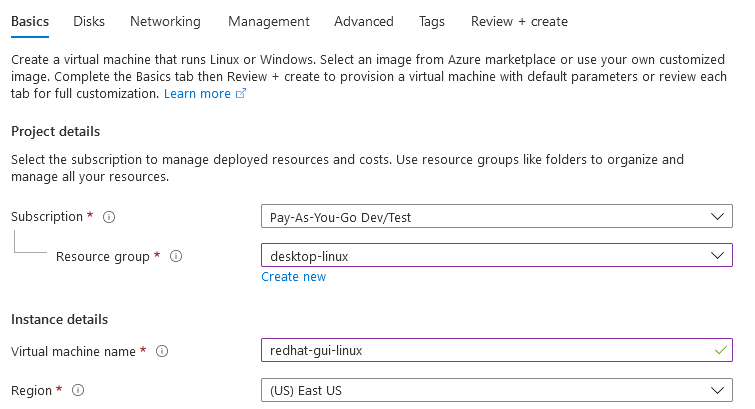
- Note: If you see “This image is not compatible with selected security type. To keep trusted launch virtual machines, select a compatible image. Otherwise change your security type back to Standard” error message below the Image name as shown in the screenshot below then please change the Security type to Standard.
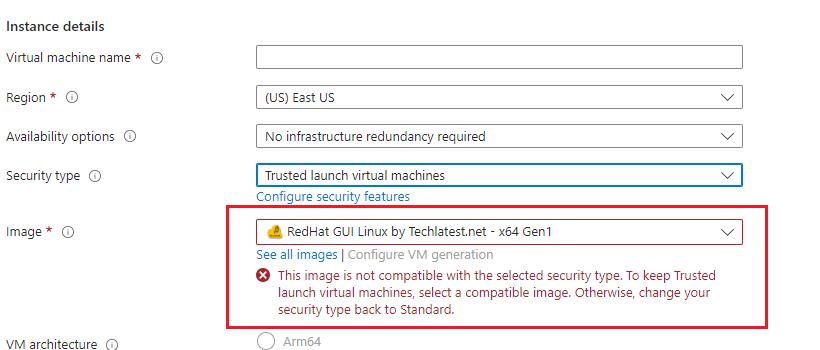
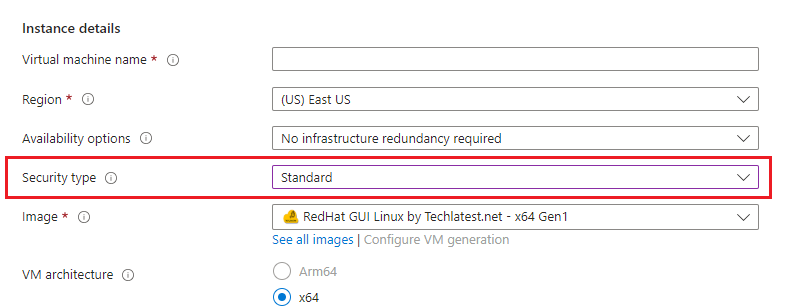
- Optionally change the number of cores and amount of memory.
Select the Authentication type as Password and enter Username as redhat and Password of your choice.
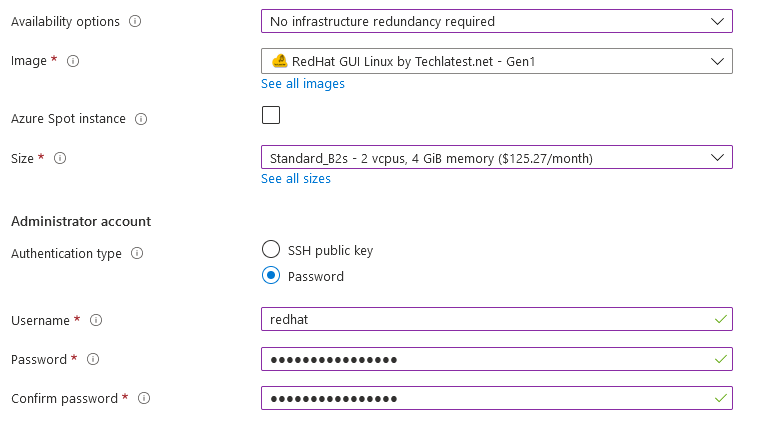
- Optionally change the OS disk type.

- Optionally change the network and subnetwork names.Be sure that whichever network you specify has “ports 22 (for ssh) and 3389 (for RDP)” exposed.

- Optionally go to the Management, Advanced and Tags tabs for any advance settings you want for the VM.
- Click on Review + create and then click on Create when you are done.
Virtual Machine will begin deploying.
- A summary page displays when the virtual machine is successfully created. Click on Go to resource link to go to the resource page. It will open an overview page of virtual machine.

- In the left navigation pane, select Run command, select RunShellScript and enter following command to change the password of the vm .
sudo echo redhat:yourpassword | chpasswd
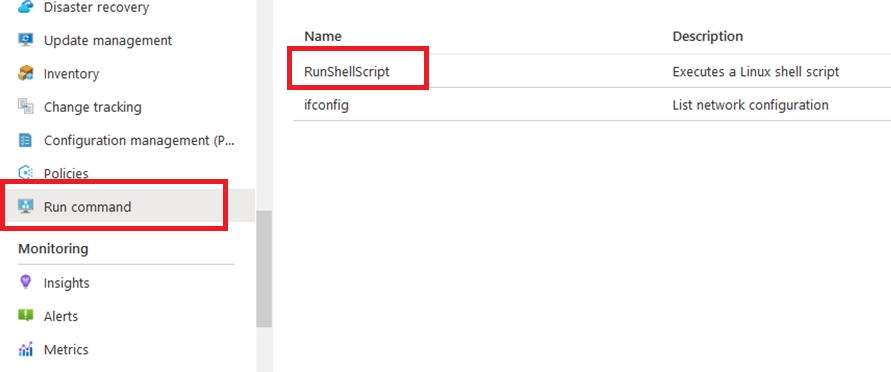
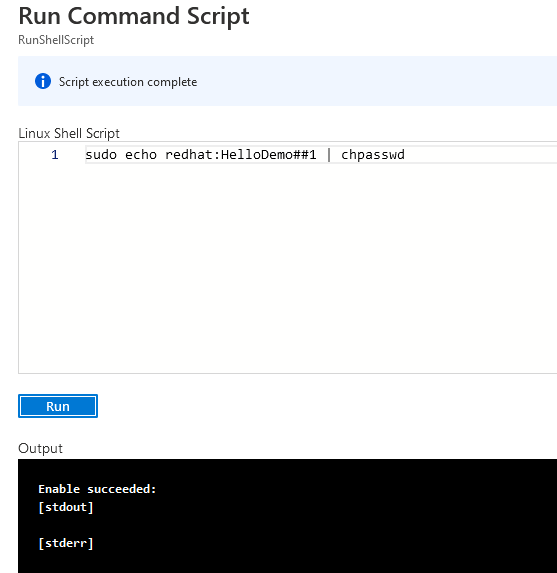
- Now the password for redhat user is set, you can SSH to the VM -
- Open putty, paste the IP address and click on Open.
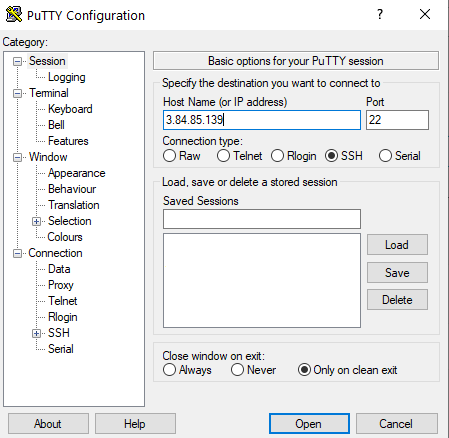
- login as redhat and provide the password for ‘redhat’ user

-
You can connect to the VM’s desktop environment from any local windows machine using RDP protocol or local linux machine using Remmina.
-
To connect using RDP via Windows Machine, first note the public IP address of the VM from VM details page as highlighted below

- Then From you local windows machine, goto “start” menu, in the search box type and select “Remote desktop connection”.
In the “Remote Desktop connection” wizard, copy the public IP address and click connect

- This will connect you to the VM’s desktop environment. Provide the username as redhat and the password set in the above step to authenticate. Click OK
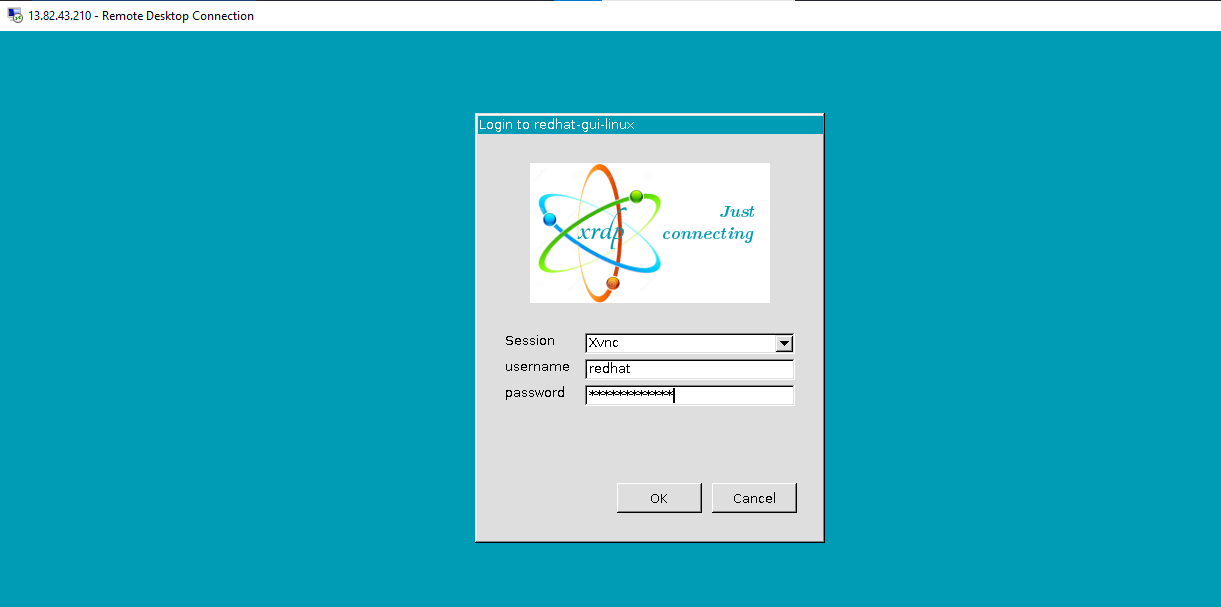
- Now you are connected to the out of box RedHat GUI Linx environment via Windows Machine.
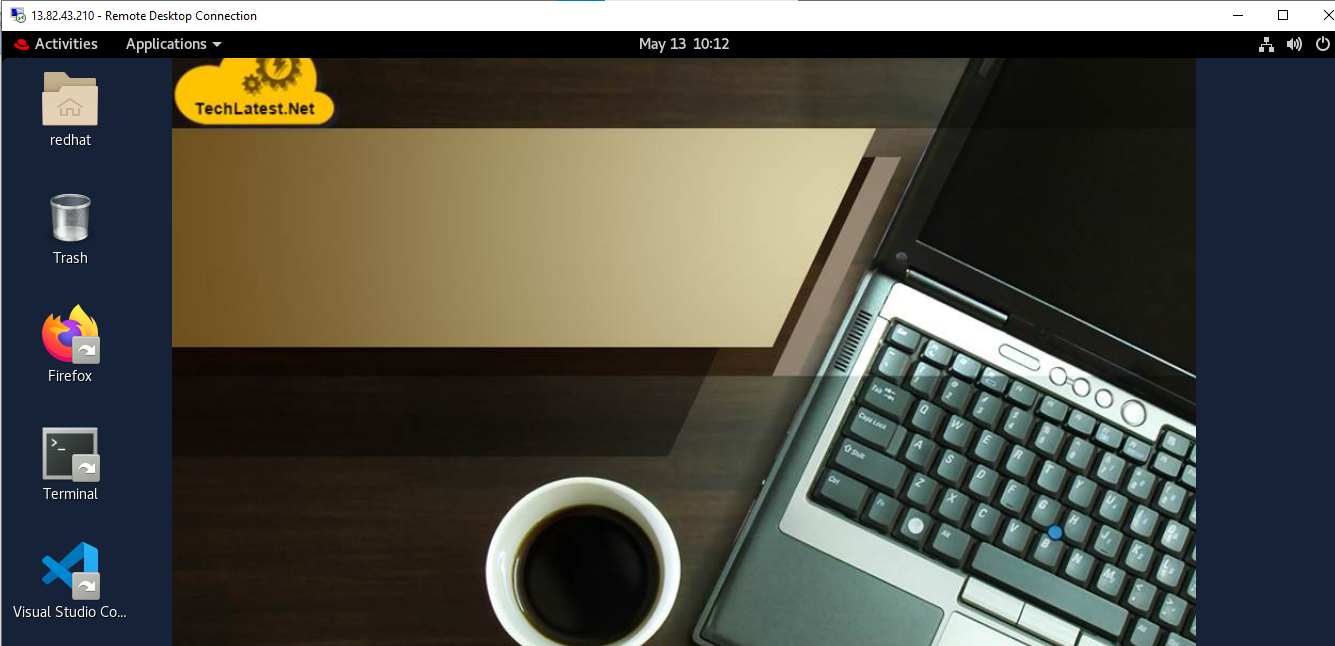
- To connect using RDP via Linux machine, first note the external IP of the VM from VM details page,then from your local Linux machine, goto menu, in the search box type and select “Remmina”.
Note: If you don’t have Remmina installed on your Linux machine, firstInstall Remmina as per your linux distribution.
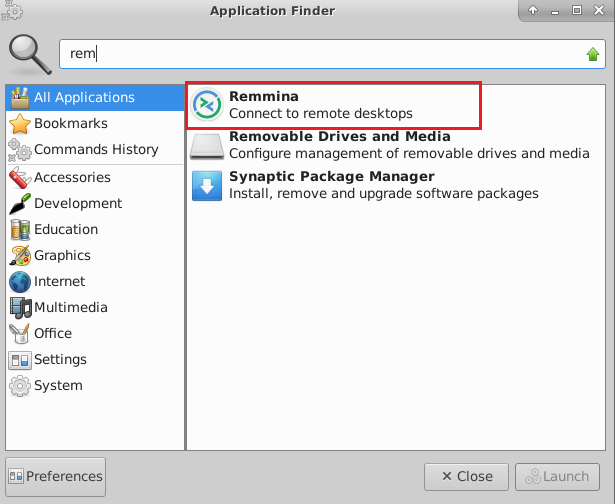 14. In the “Remmina Remote Desktop Client” wizard, select the RDP option from dropdown and paste the external ip and click enter.
14. In the “Remmina Remote Desktop Client” wizard, select the RDP option from dropdown and paste the external ip and click enter.
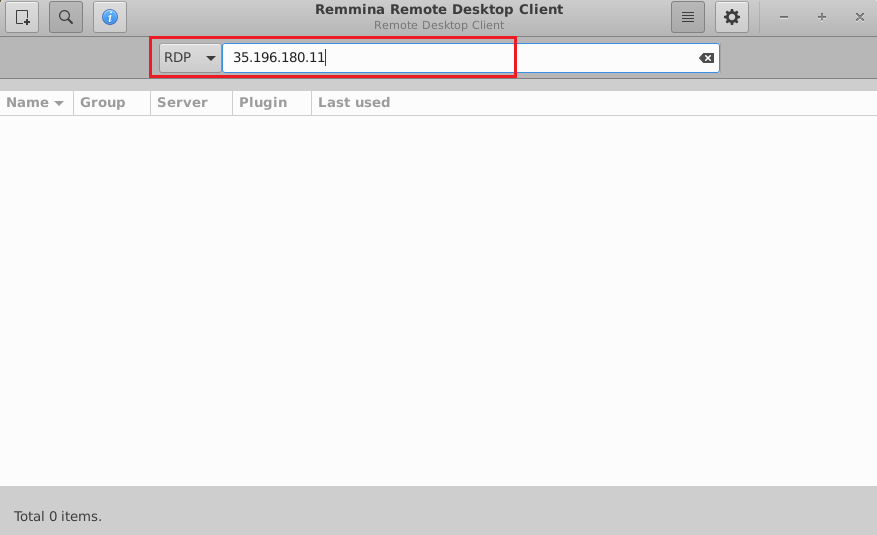 15. This will connect you to the VM’s desktop environment. Provide redhat as the userid and the password set in above reset password step to authenticate. Click OK
15. This will connect you to the VM’s desktop environment. Provide redhat as the userid and the password set in above reset password step to authenticate. Click OK
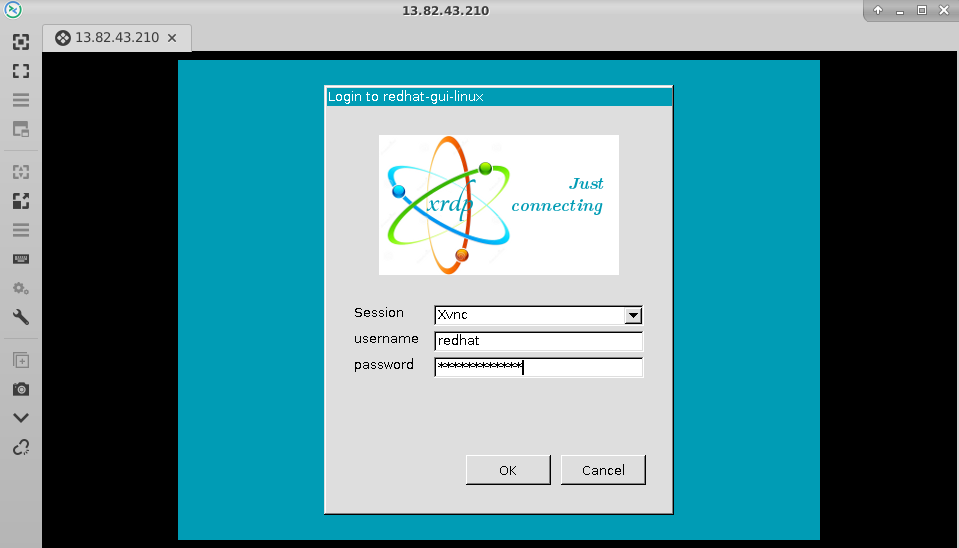 16. Now you are connected to out of box RedHat GUI Linux environment via Linux machine.
16. Now you are connected to out of box RedHat GUI Linux environment via Linux machine.
 17. Follow below steps to add new user 18. Open terminal and enter below command -
17. Follow below steps to add new user 18. Open terminal and enter below command -

- Set the password of above new user -

- Now add newly created user to the sudo group by running below command-
sudo usermod -aG wheel username

-
Once new user setup is completed, Open Remote Desktop and login via new user.
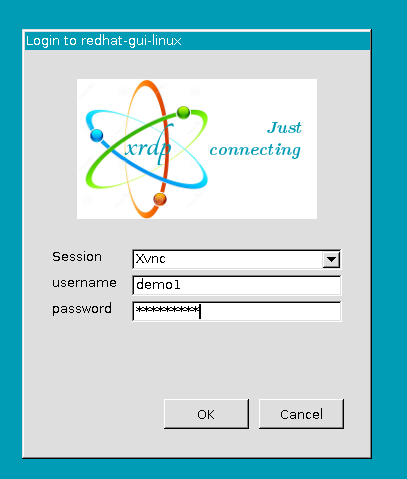
-
Now you are connected to out of box RedHat GUI Linux environment with new user
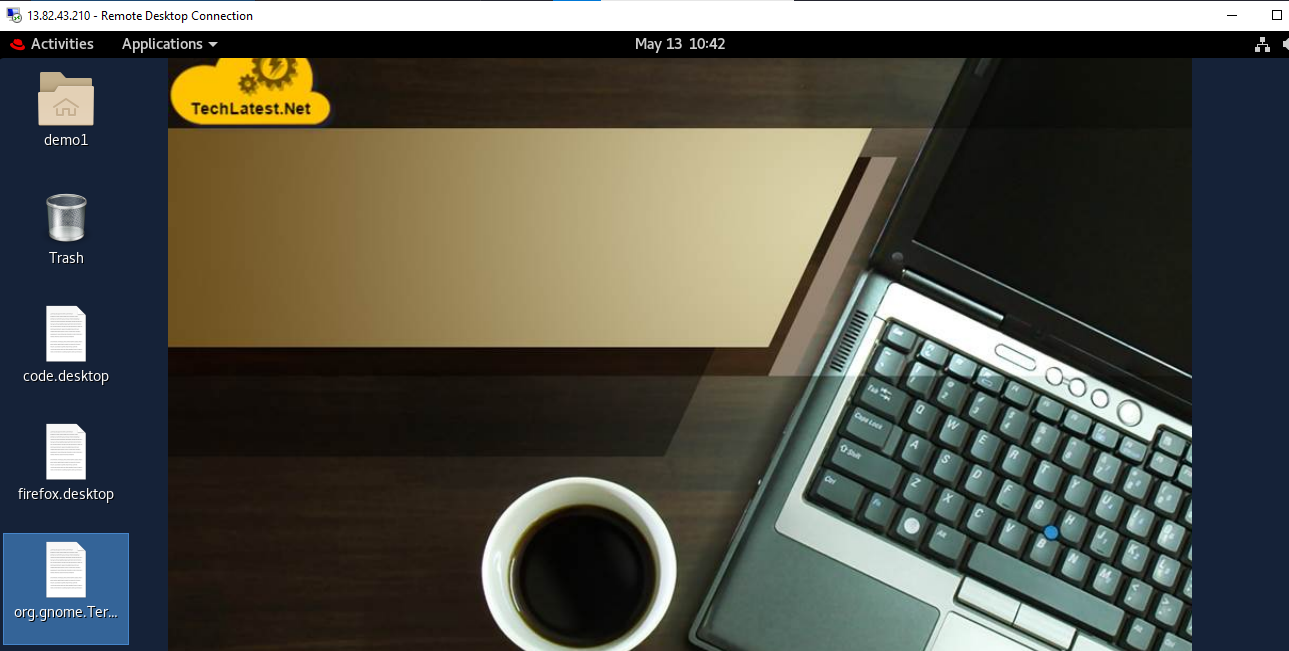
-
Right click on desktop icons and select Allow Launching option
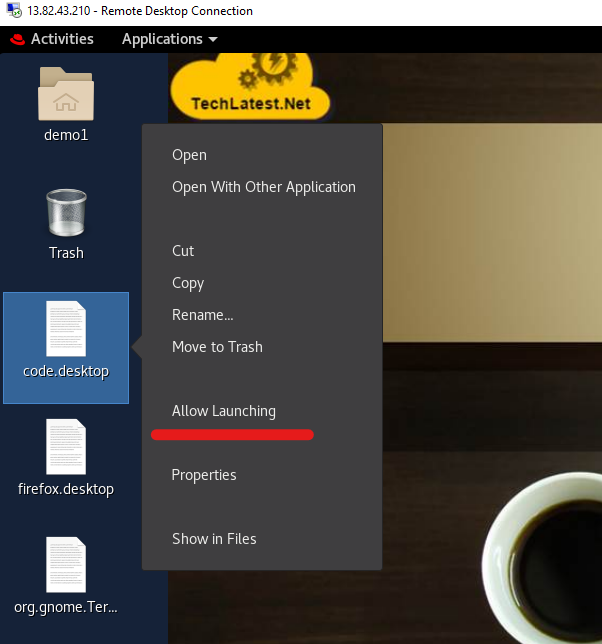
















 14. In the “Remmina Remote Desktop Client” wizard, select the RDP option from dropdown and paste the external ip and click enter.
14. In the “Remmina Remote Desktop Client” wizard, select the RDP option from dropdown and paste the external ip and click enter. 15. This will connect you to the VM’s desktop environment. Provide redhat as the userid and the password set in above reset password step to authenticate. Click OK
15. This will connect you to the VM’s desktop environment. Provide redhat as the userid and the password set in above reset password step to authenticate. Click OK 16. Now you are connected to out of box RedHat GUI Linux environment via Linux machine.
16. Now you are connected to out of box RedHat GUI Linux environment via Linux machine. 17. Follow below steps to add new user 18. Open terminal and enter below command -
17. Follow below steps to add new user 18. Open terminal and enter below command -




